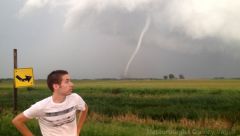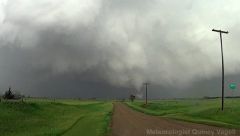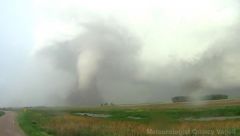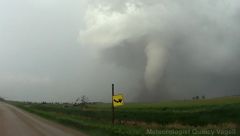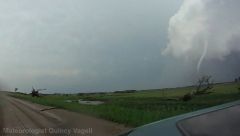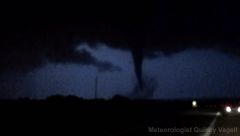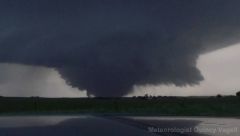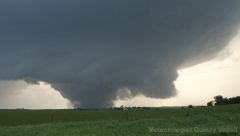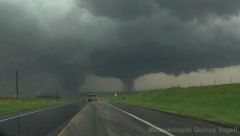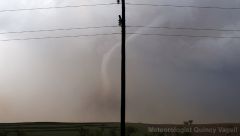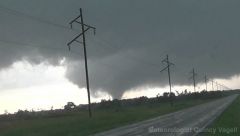-
Posts
6,220 -
Joined
-
Last visited
Content Type
Profiles
Blogs
Forums
American Weather
Media Demo
Store
Gallery
Everything posted by Quincy
-
A major snow storm is projected to bring blizzard conditions to much of New England Monday night through Tuesday. When all is said and done, many areas in and around the Boston area can expect two feet of snow with locally higher amounts. Despite the European model staying the course with greater snowfall amounts for areas around New York and New Jersey, it appears that most other data favors sharply decreasing snowfall amounts west of southern New England. As low pressure rapidly intensifies and moves toward Cape Cod and the islands, snow will become heavy with strong winds and blizzard conditions along the I-95 corridor from New York City to Boston and downeast Maine. As low pressure nearly stalls and does a loop, similar to historic blizzards in the past, a band of intense snowfall should drop excessive to possibly historic snowfall amounts. It appears that the likely positioning of this band would be on a SSW to NNE axis between central/eastern Connecticut and interior eastern Massachusetts. This may include the Boston metropolitan area. Although mesoscale details of such a band are not 100% clear, the potential exists for some 30"+ totals where this band sets up. Snow in this area will persist through the second half of Tuesday, before finally winding down early Wednesday morning. Here is the thinking for this storm. The greatest bust potential lies across far western New England, New York State, New Jersey and points west. Although this forecast leans closer to the more eastern GFS/NAM/RGEM solutions, it will still be interesting to see how the 00z Euro trends. It is very rare for the Euro to cave to the other models inside of 72 hours, but it is also hard to believe that it will stay as far west with the heavy snow as previous runs have. Another consideration is that liquid to snow ratios, especially across the interior high terrain, will be greater than 10:1. Ratios in the range of 14-18:1 across western and central Massachusetts should help offset some lower precipitation amounts with a considerable fluff factor. 8:30 a.m. Monday edit: The models have compromised a bit overnight, but the RGEM is still rather light with snowfall amounts across western New England and points west.
-
Here is a snowfall map that I created using reports from various sources. Many of the reports came from this forum and the National Weather Service. Only social media reports that passed through quality control were considered. All reports gathered were carefully considered and compared before being included. Light rain developed during the morning hours on November 26th and mixed with some sleet inland. Wet snow initially confined to the far northwestern corner of the state. As steadier precipitation moved in, a slight southeast shift of the snow/sleet line was observed with some modest evaporational cooling. However, much of coastal and southeastern Connecticut stayed predominantly rain. The main reason for the mixed precipitation and sleet was a warm layer in the atmosphere around 700mb. As precipitation became heavy, sleet fell across much of central Connecticut. Wet snow continued across northwestern Connecticut and rain moved as far northwest as Meriden and Hartford with some warming aloft nudging into the valleys. Even in those areas, the 2-meter temperature hovered around 34 degrees for much of the event, which did not allow for significant amounts of snow to accumulate. Precipitation tapered off to scattered snow showers by early evening. As cooler air gradually funneled in, a light additional accumulation of snow was reported in many areas. A few broken, but locally enhanced bands of snow continued into the early morning hours on the 27th. The greatest snowfall totals were in the range of 6 to 10 inches across northwestern Connecticut. Totals dropped off fairly quickly to the south and east. A narrow area of 3 to 6 inches was observed near and just northwest of I-84. Just southeast of there, 1 to 3 inches was reported and the southeastern third of the state generally saw less than one inch of snow. Where the snow did accumulate, it had a very high water content, especially those areas that battled between a mixture of snow, sleet and rain.
-
- Connecticut
- snowfall
-
(and 1 more)
Tagged with:
-
An early season storm is expected to bring a heavy, wet snow to the interior hills of the upper mid-Atlantic region and New England on Wednesday into very early Thanksgiving morning. While the big cities from Philadelphia to New York and Boston can expect some snow, the greatest amounts will be to their north and west. Low pressure will develop along the Carolina coast this morning and ride up the East Coast. With the low passing close to, if not over Cape Cod, no strong high pressure center in place to the north and the fact that we're still in November, a warm surge of air should penetrate up to and even a bit northwest of I-95. While temperatures from 850mb down to the surface may hover near freezing, a warm layer up around 800-700mb will likely cause melting aloft, meaning there will be sleet and rain. The result is anticipated to be heavy wet snow well inland, but quite a bit of sleet across areas such as New Haven, Willimantic and the western Boston suburbs, with a change to rain in areas including Providence and Taunton. New York City and Philadelphia look to be in a bit of a different scenario, where rain will try to change to wet snow during the day on Wednesday. The time of day will not be favorable, along with the somewhat inland 700mb low track. The heaviest snow should fall from late morning through the afternoon across northern New Jersey and the mid-Hudson Valley. The hills of interior Massachusetts and central New England should see widespread snowfall amounts over 10" with the heaviest falling from the afternoon into the evening hours. 10 to 12" will be common with a few locally higher amounts possible. Due to the localized nature of 12"+ totals, they have been omitted from this map. Snow will taper off to snow showers early Thanksgiving morning and a few flurries could linger into the day in some locations. Snowfall forecast totals for the big cities: Boston: 2 to 4 inches Worcester: 8 to 12 inches Providence: 2 to 3 inches Hartford: 6 to 9 inches New York City: 1 to 3 inches Philadelphia: 1 to 3 inches
-
Here is a snowfall map that I created using reports from various sources. Many of the reports came from this forum and the National Weather Service. Only social media reports that passed through quality control were considered. All reports gathered were carefully considered and compared before being included. Light rain, with light snow across the higher elevations, developed across Connecticut during the evening hours of November 13th. The steadiest and heaviest snow fell around midnight and tapered off during the pre-dawn hours on November 14th. Most locations eventually changed to snow, with the exception being the immediate shoreline and urban coastal corridor from New Haven down toward the New York border. On average, the hills saw anywhere from 1 to 3 inches of snow, with generally an inch or less across the valleys and shoreline. The highest amounts around and just over 3 inches were reported in Litchfield County.
-
- Connecticut
- snowfall
-
(and 1 more)
Tagged with:
-
The United States has a greater frequency of tornadoes than most other counties. For many factors, the vast majority of tornadoes occur east of the Rocky Mountains across the continental U.S. Although the central and southern Plains region is widely considered to be "Tornado Alley," there are other areas that see just as many tornadoes, if not even more. The two graphics below are adaptations of NOAA/NWS SPC graphics found in their Tornado Environmental Browser. A broad area from the east slopes of the Rockies east to the west slopes of the Appalachians typically see the most days with tornadoes per year. Two local maximums can be identified in northeastern Colorado and central Florida. While these areas may see numerous tornadoes in any given year, they are generally low on the EF-scale. The central Appalachians feature a local minimum of tornadoes, but as one travels east, the frequency of tornadoes increases. While terrain by itself will generally not have much of an effect on a tornado, especially a significant (EF/F-2 or stronger) one, there are reasons why terrain affects tornado frequency. In the Plains, lee cyclogenesis combined with a surge of warm, moist air from the Gulf of Mexico and drier air from the Rockies tends to create a favorable setup for severe thunderstorms and tornado development. Across the East Coast, there is less real estate to work with when considering the proximity to the Atlantic Ocean. Also, wind out of the south to southeast in the lower levels will often mitigate the risk of severe thunderstorms, especially in the spring and early summer months from the mid-Atlantic region into the Northeast. The placement of a "Bermuda" high and/or a "southeast ridge" of high pressure will tend to limit the formation of strong non-tropical low pressure systems along the East Coast during the warmer months, as the jet stream is often displaced further northwest. The frequency of days with significant tornadoes is in some ways similar to, but also has differences in comparison with the frequency of days with all tornadoes. While portions of Colorado and Florida may see the most tornadoes overall, there are two distinct areas that feature a much greater frequency of significant tornadoes. The southern Plains into Dixie Alley (lower to mid-Mississippi Valley) will on average experience the most significant tornado outbreaks. Here, there are three factors that are probably most responsible for this. First, their proximity to warm, moist air from the Gulf of Mexico fill favor higher dew-points and greater instability. Second, the tornado season is a bit elongated here. While April into May have featured the most significant tornadoes in Dixie Alley, the late fall into winter months have also included several major tornado outbreaks. Finally, there may be at least some influence from tropical systems. While tropical storms and hurricanes often do produce tornadoes, it should be noted that most of these tornadoes are generally not significant. Eastern Nebraska into the Midwest also averages an elevated number of days per year with significant tornadoes. Here, while the tornado season typically peaks in June, at least some fall tornado events have spawned significant tornadoes this far north. In 2013, October 3rd-4th recorded six significant tornadoes from eastern Nebraska into Iowa, with the major tornado outbreak of November 17th featuring 32 significant tornadoes in the Midwest. Other noteworthy observations: Missouri is an interesting case. The western portion of the state is often considered to be in tornado alley and some maps will place southeastern Missouri in Dixie Alley. The state has seen plenty of significant and even violent tornadoes, with the Joplin tornado of 2011 being one of the more recent examples. However, a small section of central Missouri features a local minimum in terms of both tornadoes and significant tornadoes. One possible explanation can be their location being in a "dryslot" of sorts for tornadoes. For storm systems developing just east of the Rockies, the eastward extent of associated severe weather will often fall short of central Missouri. Likewise, systems developing in the lower Mississippi Valley often form a bit too far east to target central Missouri with the most tornadoes. West Virginia has less tornadoes than most states east of the Rockies. One factor that immediately comes to mind would be the population density and terrain, which may limit some tornado reports. However, their location along the Appalachians certainly plays a role in the lower frequency of tornadoes. The higher elevations will typically have less instability. Likewise, moisture pooling will typically favor higher dew-points west and east of the Appalachians, leaving West Virginia in another tornado dryslot. According to the NWS, West Virginia has no recorded EF/F-4 or 5 tornadoes. With that said, a long-track F-5 tornado in southeastern Ohio narrowly missed passing into West Virginia before lifting. Also, an F-4 tornado that dropped southeast of Pennslvania into Maryland also lifted shortly before it would have passed into West Virginia.
-

Central/Western Medium-Long Range Discussion
Quincy replied to andyhb's topic in Central/Western States
00z NAM is awfully bullish now for Tuesday as well as Wednesday. Not sure how serious to take it, especially when it's showing a warm front all the way back into Nebraska Wednesday afternoon. Unless the GFS/Euro ramp up, may have to toss the NAM yet again. -

Central/Western Medium-Long Range Discussion
Quincy replied to andyhb's topic in Central/Western States
It's looking like a relatively small area across southeastern Kansas and far northern Oklahoma will see a somewhat favorable overlap of instability, forcing and wind shear on Wednesday. With that said, as mentioned earlier, there are still some red flags that we may be looking at another underperforming setup. While the GFS and Euro both show a surface low near the OK/KS border Wednesday afternoon and some backing low-level winds near a quasi warm front, we're just looking at a 1002mb low. Nothing like the more dynamic systems we saw last fall. While there's some moisture, the model consensus is only for mid-60s dew-points. The GFS spitting out some dews around 70 in the warm sector is likely overdone. We're looking at a relatively broad trough with no well defined shortwave energy being focused on one area. While the upper level flow is decent and the risk area is placed on the right-front jet quad, the low and mid-level winds aren't terribly impressive either, A few pieces there and and a few others likely lacking. Should still be interesting, but again, over a small area and the severity of any storms may be limited by several factors. Thursday looks to have more instability, but the shear pattern becomes more perpendicular to the front. Then, the trend continues to be toward a cold front or elongated low working as the main forcing mechanism. -

Central/Western Medium-Long Range Discussion
Quincy replied to andyhb's topic in Central/Western States
-

Central/Western Medium-Long Range Discussion
Quincy replied to andyhb's topic in Central/Western States
Still need some pieces to come together better than advertised on the Euro/GFS, but can't help but think that Wednesday into Thursday of next week has some potential from Oklahoma/Kansas into the mid-Mississippi valley. With a fairly deep trough digging, it's going to come down to timing of shortwave energy, surface low development/placement and richness of low-level moisture. Right now, the GFS shows a marginal setup with a strung out low, while the Euro is a bit more robust and shows a nice low-level jet ramping up. Let's see how the forecast evolves this weekend. -

Central/Western Medium-Long Range Discussion
Quincy replied to andyhb's topic in Central/Western States
Both the NAM and GFS look highly impressive for northern Iowa into southern Minnesota. Some may discount the NAM based off how it has handled some severe events this season, but even the GFS is spitting out some pretty significant values. Just pull a sounding for north-central Iowa and the GFS is showing over 200 m2s-2 0-1km helicity with 40+ knots of shear and a 40+ knot LLJ. Even seeing some STP values over 6 there on the GFS. (NAM is maxed out over southern Minnesota with double digit STPs) Caveats: Capping and lack of a trigger. The GFS/NAM combo does show a subtle piece of energy swinging through southern Minnesota, but one has to imagine that the threat near and south of the IA/MA border may be minimal to cap-busted. -

Central/Western Medium-Long Range Discussion
Quincy replied to andyhb's topic in Central/Western States
As mentioned, the timing for Wednesday/Thursday may be a bit off, but the parameters look awfully impressive for Wednesday. If the shortwave can speed up or we can otherwise get some more forcing in, that could kick off a few monsters. Thursday is probably out of reach, unless the whole thing slowed down. As advertised, Thursday would be a relatively narrow corridor of strong instability, but the kinematic support is lacking, along with an increasingly unidirectional shear pattern. It's into weenie-range, but the GFS/Euro also show a potent shortwave across the Dakotas/upper Midwest by next Monday/Tuesday. -

Central/Western Medium-Long Range Discussion
Quincy replied to andyhb's topic in Central/Western States
Based on fairly good model agreement at this point, it's looking quite interesting late next week/next weekend as well. A vigorous trough across the NW... The setup is somewhat reminiscent of June 16-18th, although the southeast ridge is a bit more prominent. It's way too early for specifics, but has my attention. -

Central/Western Medium-Long Range Discussion
Quincy replied to andyhb's topic in Central/Western States
The Euro indicates some severe risk for Sunday into Monday across the Plains and perhaps extending into the lower Missouri/upper Mississippi Valley regions. With an upper level trough digging, an increasing low-level jet and one or more surface lows developing along a front, there could be some potential. The GFS also points at an increasing threat at this time frame. A lot can change, but it's worth keeping an eye on. -

Central/Western Medium-Long Range Discussion
Quincy replied to andyhb's topic in Central/Western States
Some similarities to June 17th especially, at least given the slow/lazy storm motion and proximity to the NE/SD border. 00z NAM and GFS are still onboard. They're actually in fairly good agreement with the severe parameters near the warm front in southeastern SD by mid to late afternoon. Strong turning in the lowest 1-1.5km, a weakening cap and plenty of instability - assuming there's at least some clearing during the day. Both the GFS and NAM are showing >200 m2/s2 0-3km and >100 m2/s2 0-1km helicity. This combined with 30-40 knots (or more) of shear and as mentioned, there could be significant severe. I'm very interested to see the HRRR come into range. The 4km NAM simulated reflectivity shows a somewhat messy storm mode firing around 7-8 p.m. Will the window be that narrow/will initiation be that late? We'll see how the high resolution models trend. Either way, it's looking very interesting from far northeastern Nebraska into southeastern South Dakota, up to about or just north of I-90. Even the forecast soundings for KFSD look impressive with enlarged hodographs. Intriguing for any time of the year, but especially for August. -
There was a lot of anticipation leading up to July 15th. Some argued there was a "very impressive" severe setup unfolding for (southern) New England, but there was plenty of disagreement with the placement and potential severity of such an event. For a quick summary, the severe weather parameters in place (both forecast prior and during) the event were marginal compared to past severe events in southern New England. Not one important severe weather parameter was terribly impressive and there were many pieces to the puzzle that were missing here. As of July 17th, there have only been a handful of severe wind reports, centered over a small geographical area between far northeastern Massachusetts and adjacent far southeastern New Hampshire. There were a few damaging wind reports in downeast Maine, along with two marginally severe hail reports. Although there were several tornado warnings in the area, only one tornado has been confirmed so far. That was an EF-1 in Somerset County, Maine. (this blog post will be edited if any additional tornadoes are confirmed) Flooding was more of a widespread issue across much of New England and extending down into the NYC metropolitan area and New Jersey. There are some misconceptions as to what constitutes as a “significant” or “impressive” severe setup in New England. Generally almost all significant severe outbreaks occur with a west to northwest flow aloft and an anomalously strong overlap of shear (speed and directional) and instability. While it’s not uncommon to see strong instability and significant wind shear in this part of the country, they don’t often coincide with each other. There are other setups too, which are usually more marginal, sporadic and difficult to forecast. While some southwest to southerly flow events have produced severe, unless key ingredients are in place, those events usually only result in widely scattered or isolated severe reports. This event was well-modeled in the synoptic view. There was an anomalously strong upper level cutoff low moving into the Great Lakes. Ahead of this feature, there was a surface cold front advancing through Pennsylvania and New York with a pre-frontal/lee-side surface trough axis across New England by the morning of July 15th. While this may sound like a good setup, as often is the case in this part of the country, many additional things have to line up just right. If one or two (or more) variables don’t pan out right, then the whole setup will likely underperform compared to expectations. Timing was also another issue, as with the cutoff low displaced so far west from New England, the best forcing would also remain further west. The mesoscale models were predicting anywhere from 500 to 1,250 J/kg of MLCAPE (with somewhat greater SBCAPE) coinciding with 30-40 knots of bulk shear across central New England and portions of western southern New England. While both parameters are what can be considered “elevated,” they are on the low end (lower 50 percentile) for what has been observed in the Northeast in prior tornado cases. When looking at severe producing supercells in general (all types/modes), the values mentioned above are actually even less significant. Consider that the mean bulk shear value for supercells in the southwestern New England window* is 44 knots with a mean MLCAPE value of 1,421 J/kg. So, there were two key parameters in place that were elevated, but not terribly impressive in comparison to past severe events. There is another piece here that made the whole setup look even more marginal. Storm relative helicity or SRH (effective) was very meager on the computer forecast models for July 15th across most of the area. The progs were only between about 50 and 100 m2/s2. This is again on the low end, when considering that the mean SRH value for tornado and supercell cases alike in the area is 139 m2/s2 (which some cases over 300 m2/s2). While looking at this forecast setup from a strict numerical standpoint, while the threat of tornadoes and other severe weather were somewhat elevated, it was clearly a “below average,” or in other terms, an “unimpressive” setup. As far as the model simulated radar guidance, the NAM struggled to develop much in the way of discrete cell activity across southern New England, instead favoring a line of thunderstorms moving in from eastern New York by late afternoon and evening with stronger forcing ahead of the cold front. The HRRR was a bit more alarming, with a line strong to severe cells and clusters moving into southwestern New England by late afternoon. The HRRR by the 11z and 12z runs were showing some weak convection along the pre-frontal trough giving way to stronger convection further west later on. The morning of July 15th: Convection was already firing along the pre-frontal trough by midday, but due in part to limited heating, and weak forcing, the activity across Connecticut and south-central Massachusetts never reached severe limits. The HRRR continued to show stronger activity later in the day, but later runs gradually backed off on that idea. It was clear from the start that there was also a fairly unidirectional shear pattern with not much backing of low-level winds. Surface observations through the entire event, including the early to mid morning hours, showed surface winds S to SW. It cannot be overlooked that a small area from northeastern Massachusetts into southeastern New Hampshire and much of Maine did see scattered strong to severe thunderstorms develop later on during the afternoon. Analyzing the severe weather parameters on July 15th: The models did a good job of predicting wind shear, as the SPC mesoscale analysis showed an average of about 40 knots of bulk shear across the area, with more across northern and northwestern sections and less across southern and southeastern sections. MLCAPE was also close to model guidance with generally 1,000 J/kg, on average. The pre-frontal activity did decrease instability across Connecticut with a noticeable uptick in CIN, especially in the vicinity of the trough. It was across northeastern Massachusetts and points northwest where less CIN and more significant SBCAPE values supported more in the way of storms being able to reach marginally severe limits. Taking a step back, the mid-level lapse rates were fairly unimpressive across the area and this was acknowledged by SPC leading up to the event. The reanalysis showed lapse rates of 5.5 C/km or less across much of southern New England, with some lapse rates over 6 C/km across Maine. Upper level considerations: Analogs very strongly favored a relatively low-end severe event, especially given the position of the upper level low and the fact that the flow aloft was out of the SW. The RAP analysis from July 15th shows that the most significant vortmax was located very close to the upper level low, which was west of even western New York. There was some positive vorticity advection across northern New England, which likely was a factor in boosting some of the severe thunderstorms north and northwest of Boston, Mass. The mesoanalysis showed a weak, elongated vortmax between 18z on the 15th and 00z on the 16th, but this was up across northern Vermont and the northwestern Maine/Canada border. Finally, when also looking at the upper level flow, it was once again below climo levels with respect to significant severe events. The GYX and OKX soundings showed just 40 knots and 39 knots respectively of 500mb flow at 12z on the 15th. The upper level flow actually decreased notably at OKX to 31 knots by 00z on the 16th. While severe events can occur in the Northeast with limited upper level flow, the more impressive events typically have much stronger flow aloft. It should also be mentioned that the 850mb jet was unimpressive, with wind speeds of just 20 to 30 knots. Only one run of the Euro showed a signal of a strong jet and that was 144 hours prior, when it was predicting 45-55+ knots of 850mb flow. The relatively weak flow and generally unidirectional shear pattern can be seen clearly in the 12z July 15th OKX sounding: Considering the mesoscale models: The HRRR performed poorly on the larger scale, as it did not show pre-frontal activity contaminating the environment across southwestern New England. Instead, it was more optimistic in terms of severe and even showed somewhat alarming significant tornado parameter values over 1 across much of Connecticut. Although some convection did cross over from Long Island into Connecticut, this wasn’t until late at night and most of that activity was marginally severe or below severe limits. Some fairly weak storms did fire across eastern New York by late afternoon, but those merged with other convection to form a very messy storm mode, one that favored training of heavy rains and flash flooding. The models also showed more backing of low-level winds than what was observed on the morning of July 15th and through the event. In summary, what went wrong? While it’s easy to blame the entire bust on early day convection across Connecticut, consider again the forecast parameters in place that verified very closely to the actual analysis. Instability was somewhat elevated, but still modest at best with around 1,000 J/kg of MLCAPE. Shear was also elevated, but 40 knots of bulk shear is somewhat below the average for past severe cases. One of the most glaring parameters missing from the equation was helicity. Helicity was expected and verified to be quite low on the spectrum, with 100 m2/s2 at best, while tornado activity favors more than that. With a SW flow aloft, a more strongly backed low-level wind profile would have supported a greater threat of severe. Instead, any backing was minimal, with the mean low-level wind flow being S to SW. It would have been one thing if mid-level lapse rates were impressive, to offset some of the other marginal parameters, but 5.5 C/km is not going to make up for everything else. *
-

June 16-18 Tornado Outbreak
Images added to a gallery album owned by Quincy in Members Albums Category
Here are some images from the tornado outbreak that affected portions of the Upper Plains with several violent tornadoes from June 16th-18th of 2014. Some are photos and others are screen-grabs from video. -
From the album: June 16-18 Tornado Outbreak
I stand for a picture with a tornado in Alpena, SD, just a few minutes before it roped out. -
From the album: June 16-18 Tornado Outbreak
The tornado that tracked from Lane to Alpena, SD can be seen here near the beginning of its cycle. -
From the album: June 16-18 Tornado Outbreak
The Alpena tornado appears fairly large at this point. -
From the album: June 16-18 Tornado Outbreak
The Alpena tornado spins in a field next to a twisted road sign. -
From the album: June 16-18 Tornado Outbreak
A violent tornado near the end of its cycle in Alpena, SD on June 18th. A few uprooted trees can be seen in the foreground. -
From the album: June 16-18 Tornado Outbreak
On June 17th, several tornadoes continued into the night, not far from Laurel, NE. -
From the album: June 16-18 Tornado Outbreak
The tornado mentioned previously in Laurel appeared to have multiple vortices at times. -
From the album: June 16-18 Tornado Outbreak
A series of tornadoes tracked erratically on June 17th from the late afternoon hours and lasted well into the evening. This was most likely the first of this family of tornadoes, a wedge in the vicinity of Laurel, NE, -
From the album: June 16-18 Tornado Outbreak
My view of the icon and historic twin tornadoes in the vicinity of Pilger, NE.





